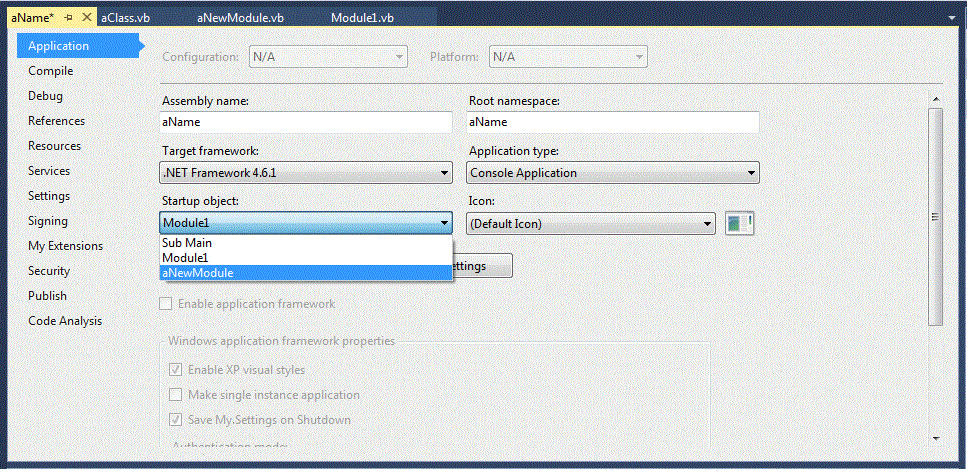Primary-Level VB.Net Coding Prerequisites - What You Need!
Before you begin coding in VB.Net as a beginner or primary student, it's important to understand how Visual Studio works. This beginner Visual Basic tutorial will guide you through setting up your development environment.
Go ahead and download Visual Studio
if you don't have it already.
Hey, the Community version is now free!
How to Set Up Visual Studio for VB.Net for Primary Students
If you are a beginner or primary student, creating a new project on Visual Studio is simple:
On the Start Page of Visual Studio,
click New Project.
Select Visual Basic and Console Application (for our purpose)
under the .Net Framework header.
Give the project a name. Click OK.
A default module with Module1 as its name gets created;
You can rename it -- right-click on the name from the
Solution Explorer panel -- if you feel like.
If you are a beginner or primary student, creating a Module file is straight-forward:
Click Project, Add Module.
Select Module, give the module a name and click Add.
If you are a beginner or primary student, creating a class file is straight-forward:
:
Click Project, Add Class.
Select Class, give the class a name and click Add.
Running Visual Basic Codes for Primary Students
For the beginners or primary students, you have to first make sure your VB.Net code contains no errors.
You may also want to see your VB.Net code's output before you get to building it.
To see your VB.Net code's output, set a breakpoint at the End Sub statement in the main module:
Click on the left area of the "End Sub" line to highlight it;
click Debug at the top of the window, Toggle breakpoint;
a red dot appears on the End Sub line.
Press F5, (click Yes) to see the project run to completion - assuming there are no errors.
A new shell is created that shows the result of your code.
Alternatively, click Debug >> Start Without Debugging (Ctrl F5)
to see your VB.Net code output.
If you have multiple modules with Sub Main();
Click Project >> <ProjectName> Properties...
and select the module you wish to run as the Startup Object.
Notice: Our VB.Net colour coding follows that of Microsoft's Visual Studio.
Introductory Visual Basic Tutorial for Primary Students
For a beginner-friendly Visual Basic tutorial for kids and primary students, summarised to only the key facts to help young learners
comprehend the Visual Basic language and get started with utilising Visual Basic for coding, check our
A beginner's Tutorial and Guide to the Visual Basic Programming Language
from the Primary Category.
Visual Studio Start Page
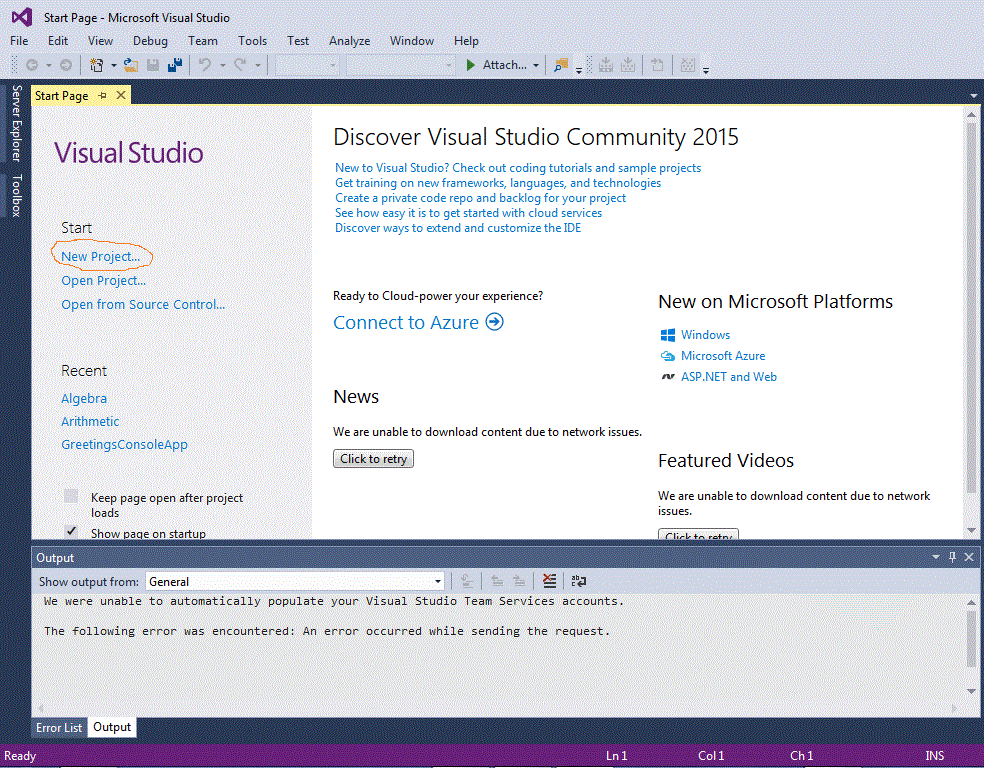
New Project
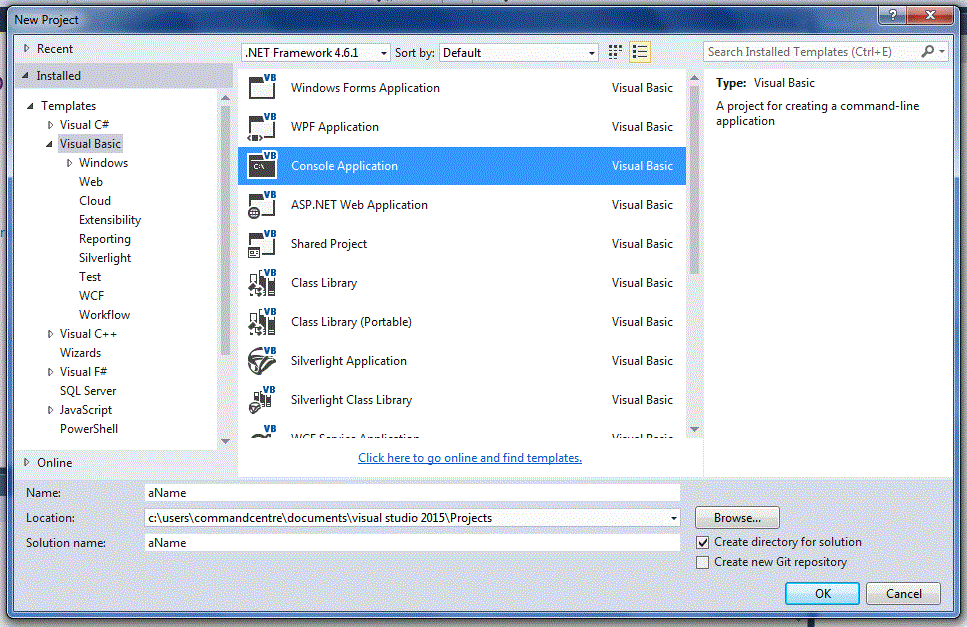
New Module
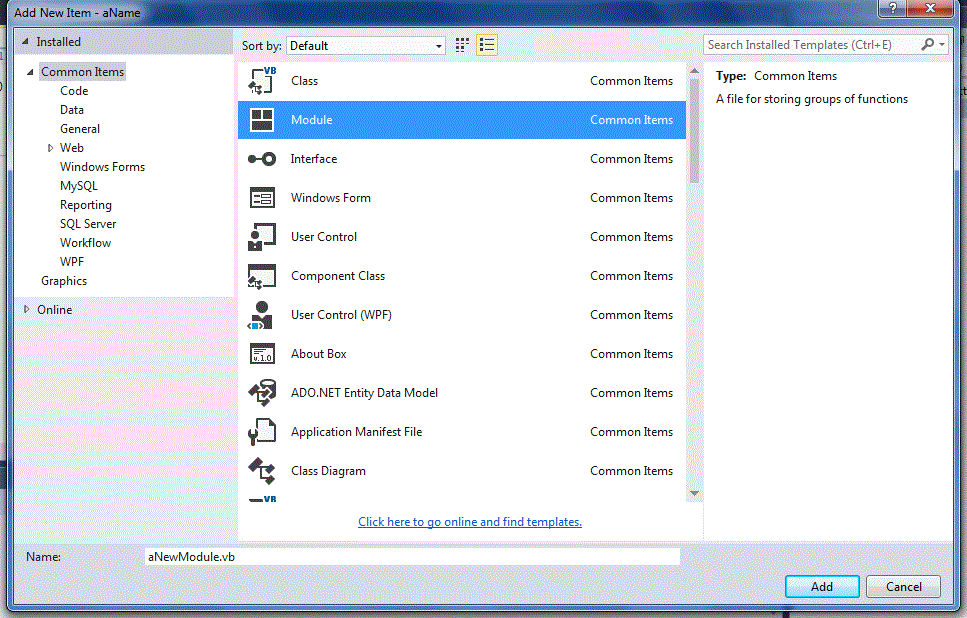
New Class
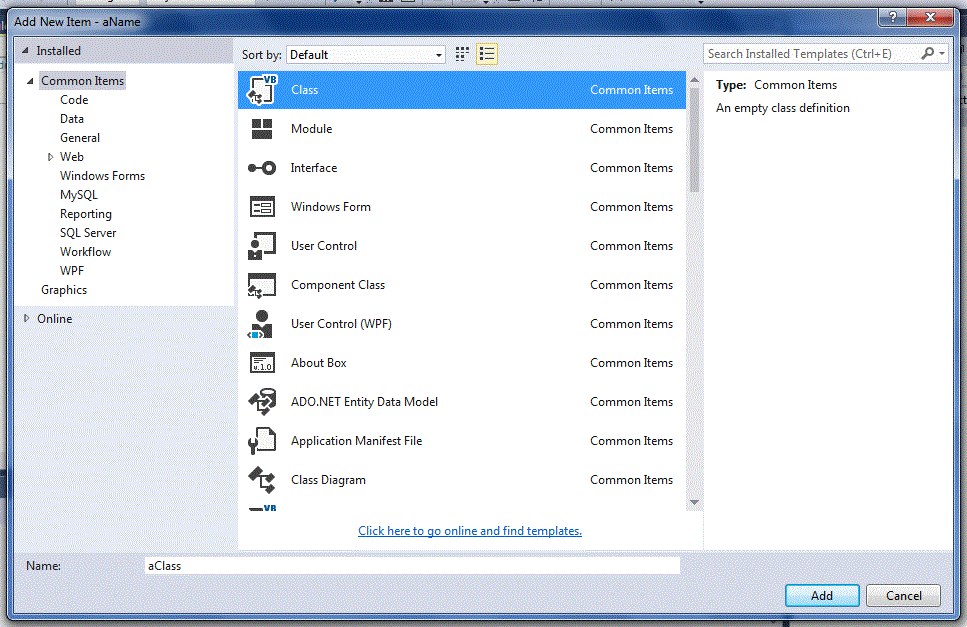
Select Module To Run
